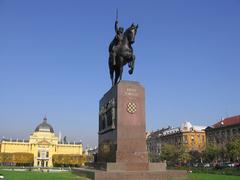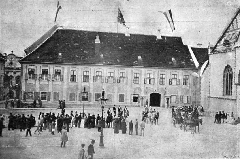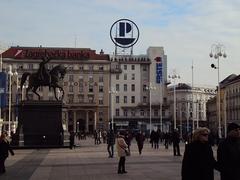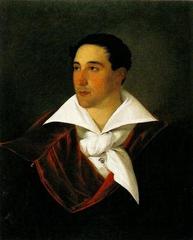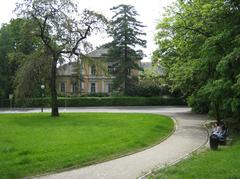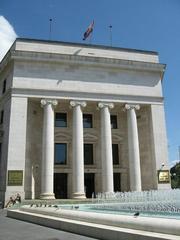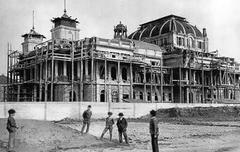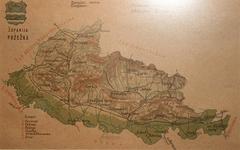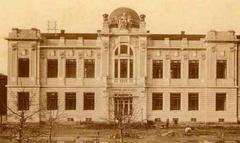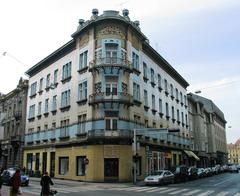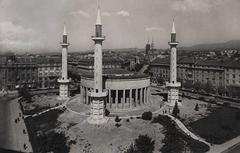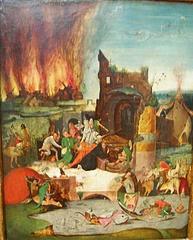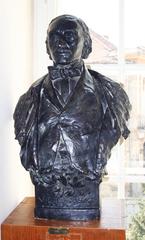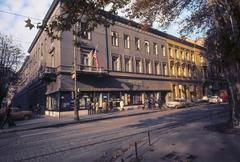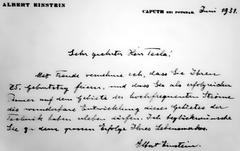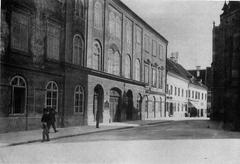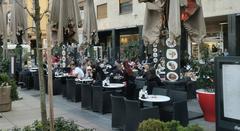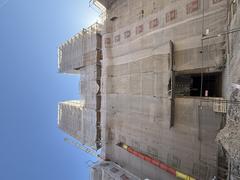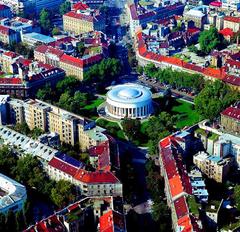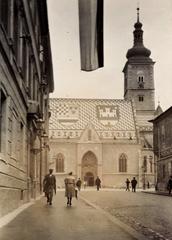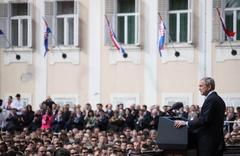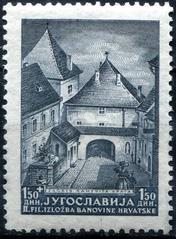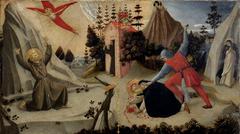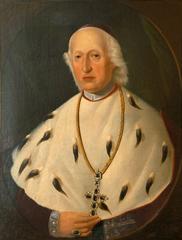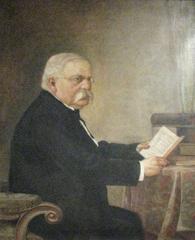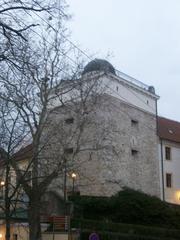British Square Zagreb: Complete Guide to Visiting Hours, Tickets, History & Architectural Highlights
Date: 14/06/2025
Introduction
British Square (Britanski trg), endearingly called “Britanac” by locals, is among Zagreb’s most vibrant and historically significant public spaces. Located along Ilica Street, it bridges the city’s medieval Upper Town (Gornji Grad) and the dynamic Lower Town (Donji Grad). Renowned for its daily open-air farmers’ market, Sunday antique fair, and striking Austro-Hungarian architecture, British Square offers an authentic window into Zagreb’s urban and community life. Whether you’re a history buff, architecture enthusiast, or simply looking to experience local culture, Britanac delivers a multifaceted experience rooted in tradition and contemporary vibrancy (Zagreb Tourist Board, Total Croatia News, Frank About Croatia).
Table of Contents
- Early Development and Urban Context
- Naming and Identity Through the Ages
- The Market: A Living Tradition Since 1891
- Architectural and Urban Milestones
- Public Transport and Accessibility
- Visiting British Square: Practical Information
- Social and Cultural Significance
- Historical Layers and Urban Memory
- Preservation and Contemporary Relevance
- Frequently Asked Questions (FAQs)
- Getting the Most from Your Visit
- References
Early Development and Urban Context
British Square’s origins trace to Zagreb’s westward urban expansion in the late 19th century. Once traversed by the Kraljevec stream—drained in 1902 for development—the area evolved from a semi-rural periphery into a bustling urban node, connecting nearby neighborhoods like Pantovčak and Radnički dol. The square’s transformation mirrors Zagreb’s broader modernization, with the introduction of gas lighting, public restrooms (1908), and a tram waiting room (1928), solidifying its role as a key city junction.
Naming and Identity Through the Ages
Initially known as “Mali plac” (“Little Market”), British Square’s formal names have reflected Zagreb’s shifting social and political landscape. It began as Ilički trg, referencing its Ilica Street location, became Pejačevićev trg in 1928 after Ban Ladislav Pejačević, and was renamed Britanski trg in 1946, symbolizing mid-20th-century European ties. The affectionate nickname “Britanac” remains a testament to its enduring local charm (Wikipedia).
The Market: A Living Tradition Since 1891
Operating continuously since 1891, the British Square market started as a poultry market, soon expanding to fresh produce, flowers, and artisanal goods sourced directly from surrounding villages. Its daily activity preserves Zagreb’s agricultural legacy. Sundays transform the square into a renowned antique fair, drawing collectors and the curious alike with vintage books, art, jewelry, and unique collectibles. The market’s authenticity and community focus distinguish it from more commercialized venues (Absolute Croatia).
Architectural and Urban Milestones
British Square exemplifies late 19th and early 20th-century Austro-Hungarian and Secessionist architecture. The Gross House (1928) finalized the square’s layout, while nearby landmarks—like the Blagoje Bersa Music School and the Museum of Illusions—enrich the cultural landscape. The square’s surrounding buildings feature symmetrical facades, stucco ornamentation, wrought-iron balconies, and occasional Art Nouveau elements. Nearby, the glass-domed Oktogon passage by Josip Vancaš connects Petar Preradović Square and Ilica Street (Radio Zagreb, Where Goes Rose).
Public Transport and Accessibility
A major transportation hub, British Square is served by tram lines 1, 6, and 11, as well as multiple bus routes, offering seamless access from across the city. The area is wheelchair accessible, with paved walkways and ramps in key locations. While some historic buildings may lack elevator access, the square itself is flat and pedestrian-friendly.
Visiting British Square: Practical Information
Visiting Hours
- Open-air market: Daily from 6:00/6:30 AM to 2:00–4:00 PM (busiest in the morning).
- Antique fair: Sundays, 8:00 AM to 2:00/3:00 PM.
- Square access: Open 24/7 as a public space.
Tickets
- No entry fee for British Square or its markets.
- Admission fees apply only for specific attractions (e.g., Museum of Illusions).
Travel Tips
- Best times: Early mornings for fresh produce; Sundays for the antique fair.
- Payment: Cash (euros or kuna) is preferred; card acceptance varies.
- Language: English is widely spoken by vendors and in local cafes.
- Weather: Markets are outdoors—dress accordingly.
Accessibility
- Wheelchair accessible: Paved surfaces and public transport stops nearby.
- Facilities: Public restrooms, ATMs, and convenience stores are in the vicinity.
Nearby Attractions
- Museum of Illusions (Ilica Street)
- Blagoje Bersa Music School
- Croatian National Theatre: Neo-baroque landmark with ornate interiors (EAA)
- The Green Horseshoe: Park and square ensemble featuring architectural highlights
- Upper Town (Gornji Grad): St. Mark’s Church, Lotrščak Tower
- Dolac Market, Tkalčićeva Street: Zagreb’s central market and popular nightlife area
Dining and Accommodation
- Cafés and bakeries: Numerous options for coffee, pastries, and light meals around the square.
- Restaurants: Nearby Ilica Street offers traditional and modern Croatian cuisine.
- Hotels and guesthouses: Abundant in the city center, within walking distance (Adventourely).
Special Events and Guided Tours
- “Old School Nights”: Thursday evenings featuring vintage vehicles and documentaries.
- Seasonal festivals and pop-ups: Especially in summer and winter.
- Guided walking tours: Many include British Square on routes focused on market culture and urban history (Where Goes Rose).
Social and Cultural Significance
British Square is a living testament to Zagreb’s communal spirit. Its market fosters social bonds, supports local farmers and artisans, and sustains neighborhood vibrancy. The antique fair not only preserves historical artifacts but also serves as a gathering point for storytelling and cultural exchange. The square’s tradition of year-round operation, regardless of weather, underscores its role as a resilient social institution.
Historical Layers and Urban Memory
The evolution from a stream-crossed periphery to a bustling urban hub reflects the city’s broader historical transitions. British Square’s changing names, architecture, and public functions capture Zagreb’s political milestones and shifting civic identity, while its enduring market tradition anchors it in daily life.
Preservation and Contemporary Relevance
As one of Zagreb’s few original open-air market squares, Britanac embodies the city’s agricultural and urban heritage. Ongoing preservation efforts aim to maintain its unique character, balancing modernization with respect for tradition. Its continued integration with transport, commerce, and culture ensures its relevance as a vital public space (Total Croatia News).
Frequently Asked Questions (FAQs)
Q: What are British Square’s opening hours?
A: The square is open 24/7. The market operates daily from 6:00/6:30 AM to 2:00–4:00 PM; the Sunday antique fair runs from 8:00 AM to early afternoon.
Q: Is there an entry fee for British Square or the markets?
A: No, both are free to enter.
Q: How do I get to British Square by public transport?
A: Take tram lines 1, 6, or 11 (from Ban Jelačić Square) or relevant bus lines; the area is also walkable from the city center.
Q: Is the square accessible for wheelchair users?
A: Yes, the square and public transport stops are generally accessible, though some historic buildings may lack ramps or elevators.
Q: Are guided tours available?
A: Yes, many city walking tours include British Square as a stop.
Q: Can I pay with credit cards at the market?
A: Cash is preferred; some antique dealers may accept cards.
Q: Are pets allowed?
A: Pets on leashes are typically welcome in the square, but not inside vendor stalls.
Getting the Most from Your Visit
- Arrive early for the freshest market produce and best antique finds.
- Enjoy a coffee at a local café and soak in the neighborhood atmosphere.
- Explore nearby landmarks like the Croatian National Theatre, Green Horseshoe parks, and the Upper Town.
- Support local artisans by purchasing seasonal goods and bringing reusable bags.
- Check for special events and festivals, especially on weekends and holidays.
For the latest updates, consider downloading the Audiala app for audio guides, or visiting the Official Zagreb Tourist Board site.
References & Resources
- Zagreb Tourist Board
- Official Zagreb Tourist Board
- Total Croatia News - British Square
- Frank About Croatia
- Wikipedia: British Square (Zagreb)
- Absolute Croatia: British Square Zagreb
- Radio Zagreb - Architectural Styles
- Where Goes Rose - Zagreb Things To Do
- EAA - Architectural Highlights in Zagreb
- Adventourely - Where to Stay in Zagreb
For a more immersive experience, consider browsing photo galleries and interactive maps of British Square, featuring alt-tagged images for accessibility and SEO.

